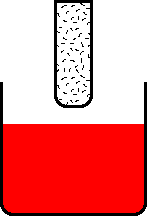Introduction to Dip Molding and Coating
Candle making is probably one of the earliest dip molding/coating processes used in the industry. It is still in use today. Dip coating has also been an important branch of food processing. For example, chocolate and/or caramel are often coated on many nuts, cookies, and dry or fresh fruits. Dip molding and coating were widely used even before plastic materials were invented. In this context, however, the scope of discussion is limited to plastic manufacturing processes.
Dip molding is a plastic manufacturing process where a heated metal mandrel(mold) is immersed in a tank of molten polymer resin such as plastisol. The plastic is coated/formed around the mold. The hotter the mold and the longer the dip, the thicker the coating. The mold is then extracted from the bath and goes through a curing or cooling process. The part is stripped from the mold after is cured or solidified. Even parts on complicated molds can be stripped relatively easily because the material is quite elastic. The part may need to be dipped more than once to achieve the desired thickness. Examples of dip molded products are surgical gloves, plastic bags, handlebar grips, and so on.
 |
 |
 |
 |
Dip coating is very similar to dip molding except that instead using a mandrel, an actual part is coated by the desired plastic material. The plastic coating provides a protecting layer as well as a better-looking finish. Multi-dipping can be used when two or more different material characteristics or properties are needed for a single product. The coating does not have to be smooth and shiny. It could be an open or closed cell foam, it could be matte or textured, i could even simulate the look and feel of suede or leather.
 |
 |
 |
Plastisol is the most common dip molding material. It is a mixture of suspended plastic particles (usually PVC) dispersed in a plasticizer. As a liquid, it can be stored at room temperature for years. Once heated, the two components fuse into a vinyl, never to liquify again. Plastisol can be formulated to produce vinyls with almost any durometer, clarity, color, and a variety of chemical and electrical properties.
Other common candidates for dip molding are latex, neoprene, urethane, epoxy, etc. Recently, polyurethane and Silicone are often used to replace latex to avoid allergy related issues.
To control the thickness and the quality of the finish, the following parameters need to be carefully managed in the dip molding process:
◾Temperature of the mold
◾Temperature of the resin
◾Speed of dip-in
◾Bath time
◾Withdraw speed
Pros and Cons of Dip Molding
Pros
◾Short lead time
◾Suitable for fast prototyping
◾Low initial setup (tooling) costs
◾Low production costs
◾Complex parts can be easily stripped from the mold because they are highly elastic
Cons ◾Relatively slow in production
◾Precision control of the wall thickness is a challenge

